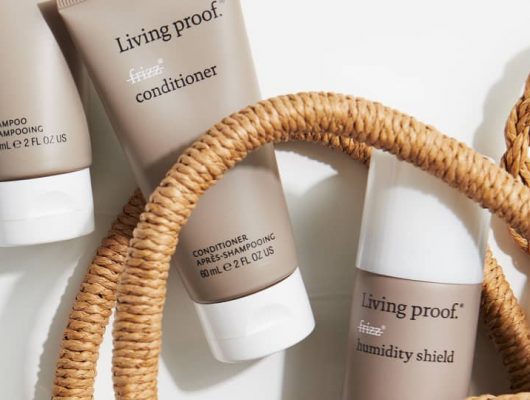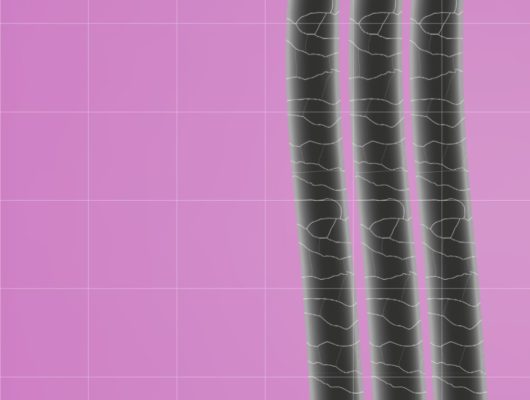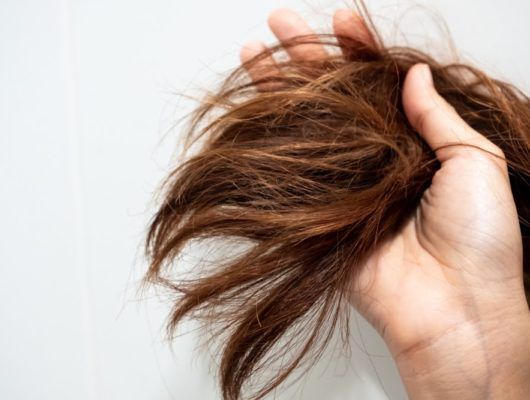
5 Common Signs of Damaged Hair
Regardless of hair type, it’s easy to rack up incidental hair damage due to a heat styling tool, UV exposure, hard water, and more. While damage is an issue that affects the makeup of your hair follicles, you don’t need a microscope to identify it – all you need to do is pay attention to the signs.
So how do you know if your hair is damaged? You might notice some signs just by looking in the mirror, and others you can identify just by running your fingers through your hair.
Once you learn how to know if your hair is damaged, the next important step is to do something about it. Damaged, unhealthy hair can be treated and restored with the right hair repair products, but the earlier you catch it, the better. Read on to learn more and how to tell if your hair is damaged.
What is Damaged Hair?
The hair cuticle is the outer layer of the hair strand that protects the hair cortex. When hair is damaged, that cuticle layer becomes cracked or stripped in certain areas. If you were to look at a strand of healthy hair and a strand of damaged hair under a microscope, you would see a noticeable difference. Typically, the hair’s cuticle layer appears like scales along a rope. The cuticle of the healthy hair strand appears uniform and consistent, while the cuticle layer, or the “scales,” of the damaged strand looks open and uneven, exposing the cortex to the environmental stressors.
Damage is an issue, because it means the hair cuticle isn’t functioning as it should and isn’t offering the protection the hair shaft needs. Damaged, unhealthy hair can’t retain moisture, is more difficult to manage, and appears frizzy, dry, and dull.
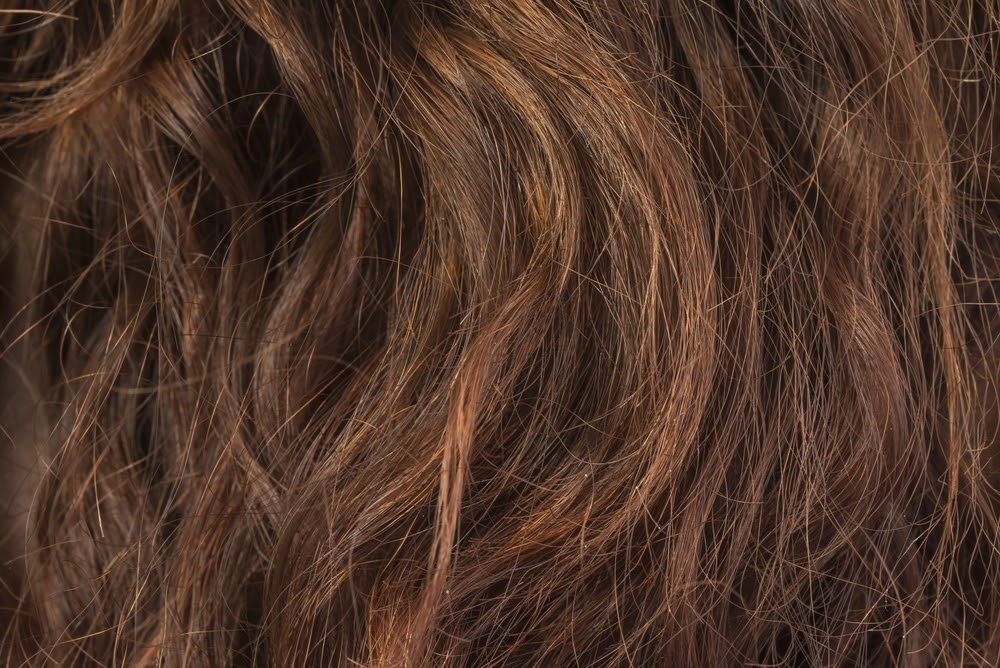
How To Tell If Your Hair is Damaged
The good news? Whether you have straight hair, wavy hair, or curly hair, there are a few clear signs of hair damage.
1. Dry or Brittle Hair
If your hair constantly feels dry, damage to the cuticle layer may be to blame. When the hair’s cuticle layer is damaged, moisture can more easily escape, leading to a brittle or straw-like hair texture. Plus, if you try providing your dry hair with moisture, hair can’t retain it as well — creating a cycle of dryness. Another way to tell if this is happening: Your wet hair dries really quickly.
2. Hair Feels Thick at the Root and Thin at the Ends
As we mentioned earlier, hair damage is the result of a missing or inconsistent cuticle layer, which typically happens near the middle or ends of your hair, as these areas tend to be most exposed to damage. When the cuticle layer is missing or disrupted, the hair may feel more thin and rough. You may notice this when you run your fingers through your hair, or by simply seeing the ends of your hair appearing thin or split. (Split ends can often be a clear sign of damaged hair.)
3. You Notice More Shedding
Are you noticing more hair left on your brush, on your pillow, or even in the shower drain? Damaged hair is more prone to hair breakage, which means your hair can snap off and shed more easily.
4. Your Hair Is More Tangled Than Usual
When the cuticle layer is disrupted, strands of hair are more likely to get caught on other strands, which can lead to excessive tangles. That said, curly hair and long hair are also prone to tangles, so just because your natural hair is difficult to detangle, it doesn’t necessarily mean it’s
damaged. If the tangling seems to come out of nowhere — or isn’t something you typically deal with — damage could be the culprit.
5. Your Hair Appears Dull
Dullness is a sign of hair damage. Hair with damaged cuticles will lack the smoothness and shininess that come from a smooth cuticle layer and properly moisturized hair. Damage that shows itself with dullness could be caused by pollution, UV rays, product buildup, hard water, and more. Excess product buildup can also lead to unhealthy scalp irritation we recommend using a weekly dry scalp treatment if you start to notice your scalp feeling dry or irritated.
How to Address the Signs of Hair Damage
If any of the above sounds familiar, don’t sweat it. The secret behind how to restore damaged hair is simpler than you may think. Aside from having the right types of shampoo and conditioner, there’s another hair product you can add to your hair treatment routine.
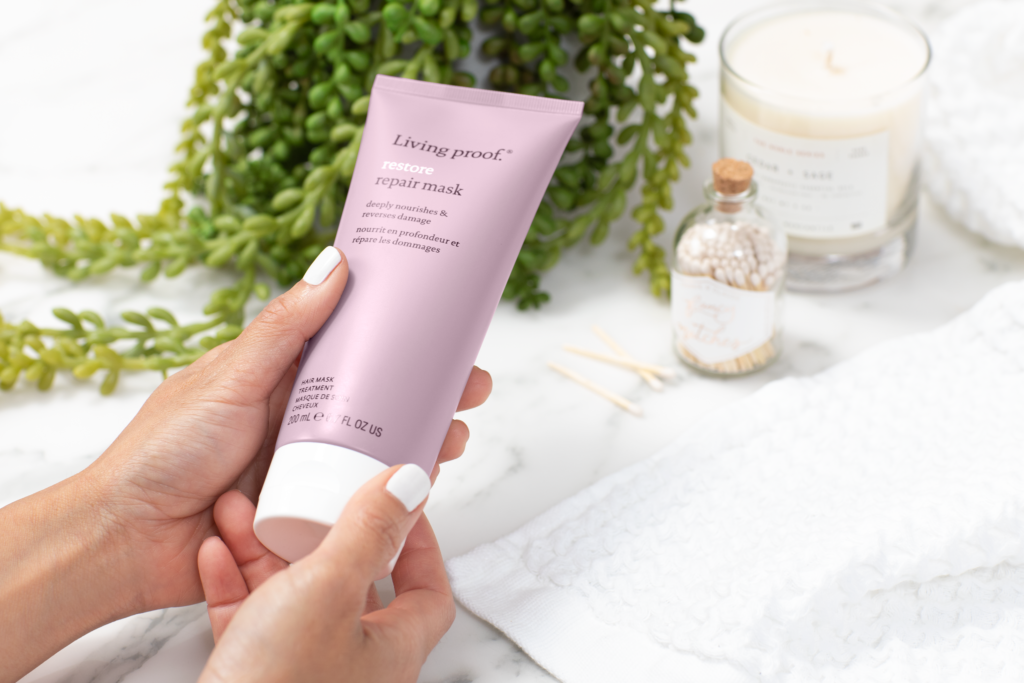
Treat Hair with a Mask
Are you a fan of hair masks? You can dramatically (and quickly) improve dryness, hair breakage, and damage with a restorative hair treatment such as a hair mask for damaged hair. Once or twice a week, use the Restore Repair Mask in place of your conditioner to deeply nourish and reverse hair damage.
This powerful treatment can restore healthy hair moisture levels, reduce breakage by up to 70% after just one use, and even help protect against further damage. It also imparts long-lasting softness, shine, and smoothness, so those tell-tale signs of damage will be less noticeable even after one use.
While you’ll see results quickly, continue to use this mask weekly as part of your routine to prevent future damage and improve hair health. It allows you to get the style, color, and hair texture you want.
Keeping Your Hair Healthy
Now that you know how to tell if your hair is damaged, you can keep your hair healthy and strong with some of the tips above. To bolster your haircare routine with hair repair products, browse the Restore collection today at Living Proof.

